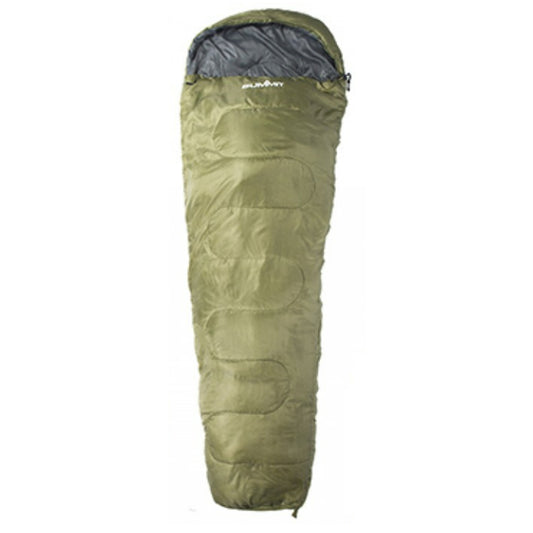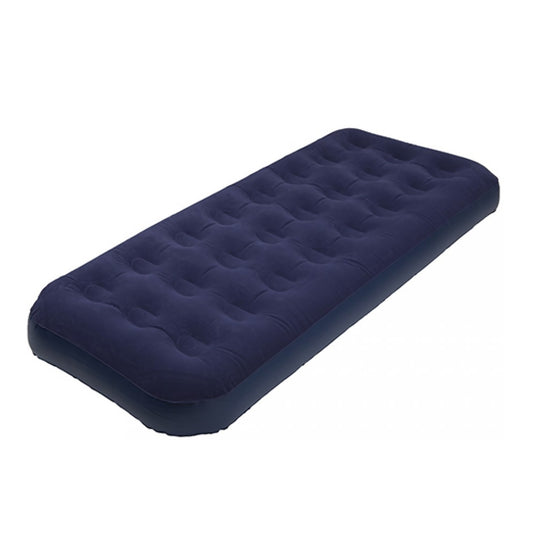RECEIVE 10% OFF YOUR FIRST ORDER WITH 'NewCustomer10' CODE AT CHECKOUT
BUY NOW, PAY LATER WITH KLARNA OR CLEARPAY ON ALL PRODUCTS
-
Sac de couchage léger à capuche pour adultes
Prix habituel £14.99Prix habituelPrix unitaire par -
Lit de camping gonflable simple floqué de luxe 191 cm x 73 cm x 22 cm
Prix habituel £15.99Prix habituelPrix unitaire par£0.00Prix promotionnel £15.99 -
Matelas gonflable double floqué 191 cm x 137 cm x 22 cm
Prix habituel £24.99Prix habituelPrix unitaire par£39.99Prix promotionnel £24.99En vente
Common Questions About Camp Sleeping
What is the best sleeping bag temperature rating for camping?
Choosing the right sleeping bag depends on the temperatures you'll encounter during your camping trip. A one-season sleeping bag is ideal for summer use, typically rated for +5° Celsius (C) or approximately 40° Fahrenheit (F) and above. For spring and fall, a two- or three-season sleeping bag is suitable, often rated between 0° to +5° C (32° to 40° F). If you're camping in winter or cold conditions, opt for a four-season sleeping bag, which can handle temperatures below 0° C (32° F), providing the warmth needed in freezing conditions.
How can I make sleeping more comfortable while camping?
To enhance comfort, choose a sleeping pad with adequate insulation, bring a comfortable pillow, and select a sleeping bag suited to the weather conditions. Wearing a base layer and using a sleeping bag liner can add extra warmth and comfort. Additionally, ensure your tent is set up on a flat, debris-free surface.
How do I properly care for my sleeping bag?
To maintain your sleeping bag, avoid storing it compressed for long periods; instead, store it loosely in a large sack or hang it up. After each trip, air it out to remove moisture and odours. Spot clean with a gentle detergent and, if necessary, wash it in a front-loading washing machine on a gentle cycle, then air dry or tumble dry on low with tennis balls to fluff it up.
What’s the difference between down and synthetic sleeping bags?
Down sleeping bags offer excellent warmth-to-weight ratio and compressibility, making them ideal for cold weather and backpacking. However, they lose insulating power when wet. Synthetic bags are more affordable, dry quickly, and retain insulation even when damp, making them better suited for wet or humid conditions.
How do I choose the right pillow for camping?
When choosing a camping pillow, consider weight, size, and comfort. Inflatable pillows are lightweight and packable, while compressible pillows filled with foam or down offer more comfort but take up more space.
What is the difference between a mummy sleeping bag and a rectangular sleeping bag?
A mummy sleeping bag is designed to closely fit the shape of your body, tapering at the feet and usually including a hood, which helps retain body heat more effectively, making it ideal for colder conditions. Rectangular sleeping bags offer more space and freedom of movement, which can be more comfortable for those who prefer a less restrictive feel. However, they may not be as efficient at retaining warmth compared to mummy bags.
Can I use a regular blanket or duvet instead of a sleeping bag when camping?
While it’s possible to use a regular blanket or duvet, sleeping bags are generally more efficient for camping because they are designed to trap body heat and provide insulation even in colder conditions. Blankets and duvets may not offer the same level of warmth, especially if the temperature drops significantly at night. However, if you’re camping in a mild climate and comfort is your priority, bringing a duvet or blanket can be a cosy alternative.





